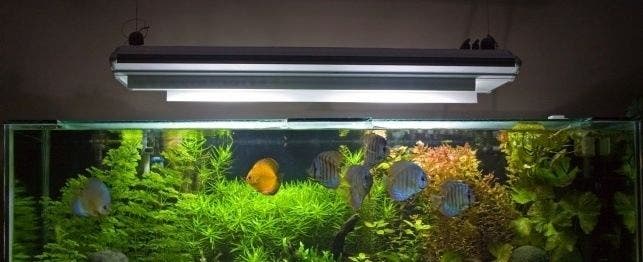
Selecting the Right Filter for Small Aquariums
While it’s possible to set up a “natural” aquarium with no added equipment but light and heat, most aquariums need a way to filter out unwanted debris, fish waste and dissolved gases from the water. Among the choices facing you when you set up your aquarium will be an intimidating array of available filters.
There are filters that go under the tank’s gravel bed, filters that sit in the tank, filters that hang on the side and filters that work from outside the tank. While your choice will depend on the kind and size of the tank you’re setting up, there are some basics that apply to all tanks.
First is that for a freshwater tank you only need to be concerned with three kinds of filtration: mechanical, chemical and biological. Simply put, mechanical filters remove particles of debris from the tank by taking in the water and pumping it through some kind of filtering material. When the filtering material is full, you take it out and change it.
Chemical filtration takes out many dissolved gases that can be toxic to your fish. This is usually done by pumping the water through a handful of carbon chips, which take up the unwanted gases. The carbon also has to be replaced regularly.
Biological filters encourage the growth of “good” bacteria that live by breaking down the ammonia and toxic nitrites that develop in the tank. These filters take up to a couple of months to begin working efficiently but once going need no replacement.
Once, these processes required separate filters. Today, combination filters can accomplish two or three kinds of filtration.
Types of Filters
The most basic kind of filter is the little plastic box that sits inside the tank connected by a plastic tube to a small, motorized pump on the outside. Inside the box a handful of fiberglass-like floss serves as the mechanical filter and carbon chips act as a chemical filter. The pump draws the water through the filter material and returns it back into the tank.
While good, perhaps, for a small breeding tank or sick tank, power filters that hang on the inside of the tank have surpassed these filters. Power filters contain the motorized pump in their housing. They pull water from the aquarium and pump it out with enough force to push it up over a little spillway where it’s aerated and then through floss and carbon filters. In most of these, the floss and carbon filters are put together in a single, easily replaceable pad.
For the first aquarium, say up to 20 gallons, this kind of filtration should be sufficient as long as you have good housekeeping habits, such as maintaining water quality and pH levels, changing a quarter of the water weekly, changing the filter pads regularly, and avoiding overcrowding your tank or overfeeding your fish.
Add Fish Slowly
Fish come with their own “good” bacteria that can break down nitrites and ammonia. If your tank is not crowded, they will keep gases down to a minimum. In order to allow these bacteria to be established in the tank, begin with only a couple of hardy fish such as goldfish or danios. As the waste from these fish comes into the tank, colonies of the bacteria that break down the waste will begin to form. If you have an ammonia tester, you will see the level of ammonia rise over a few weeks and then fall as the bacteria become established. Once the bacteria are established and the ammonia reading is down to 0, you can feel free to add more fish.
One thing cannot be stressed enough when starting off an aquarium, and this is patience. While it may be tempting to go into the fish store and stock your tank from the start, in the long term it will cost you financially and emotionally when you watch your beautiful fish slowly die off. The major killer is ammonia. So go slowly.
In addition to the power filter that hangs on the tank, there are also under-gravel power filters. These consist of a slotted plate that sits on the bottom of the tank beneath the gravel bed. A pump draws the water down through the filter and out the tank and back in. One of the nice things about these filters is that they are invisible in the tank. There’s no big ugly black box hanging inside. The problem with these filters is that they can become clogged with the detritus being drawn through them and cause problems of their own. The only way to clean them is to take apart the entire tank.
Some new power filters have begun adding components that add some level of biological filtration to the tank as well. This means a pad or sponge that has been injected with a culture of nitrite-eating bacteria. Even with these, however, the good development of a bacterial colony capable of handling your tank takes time.